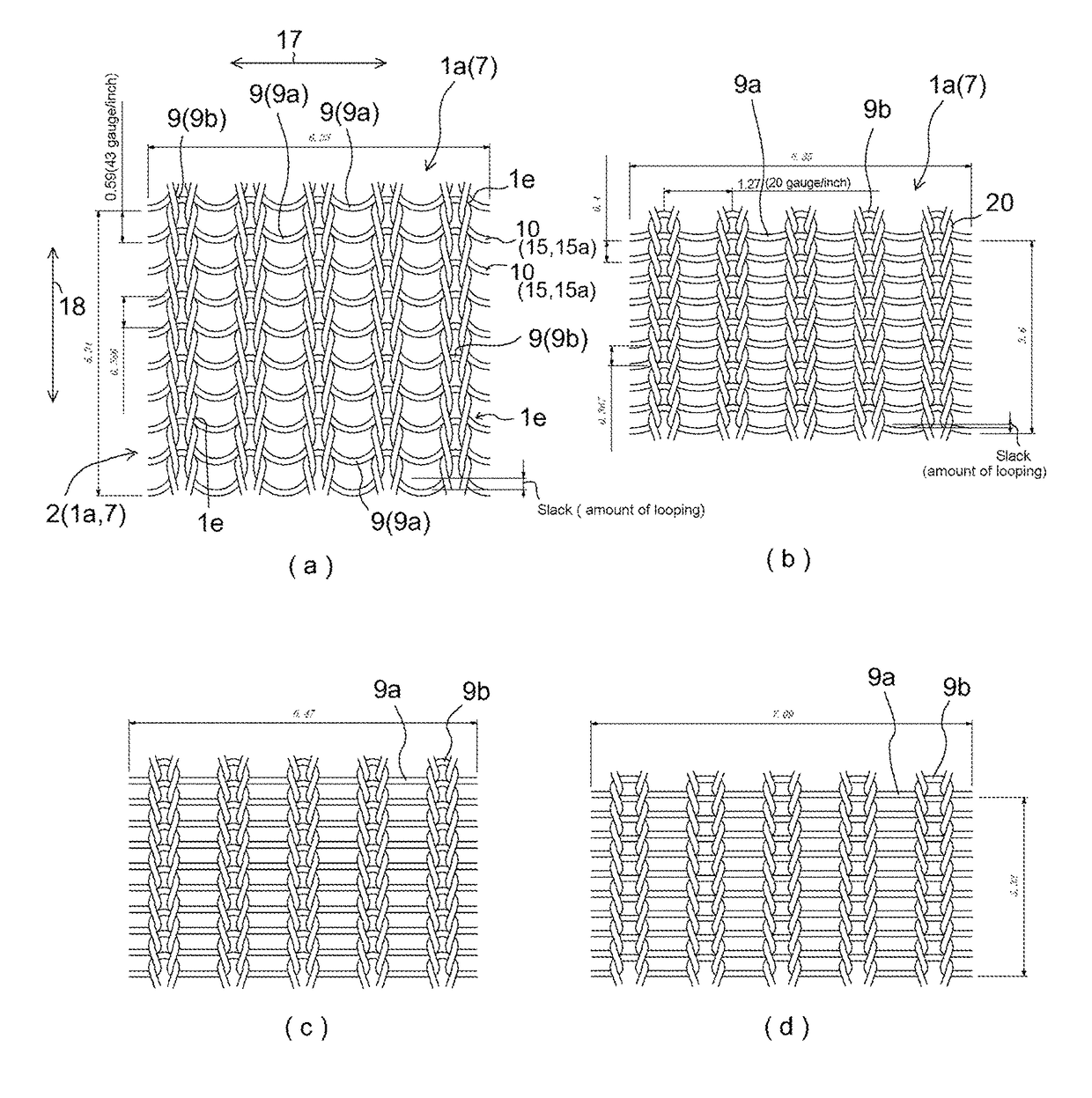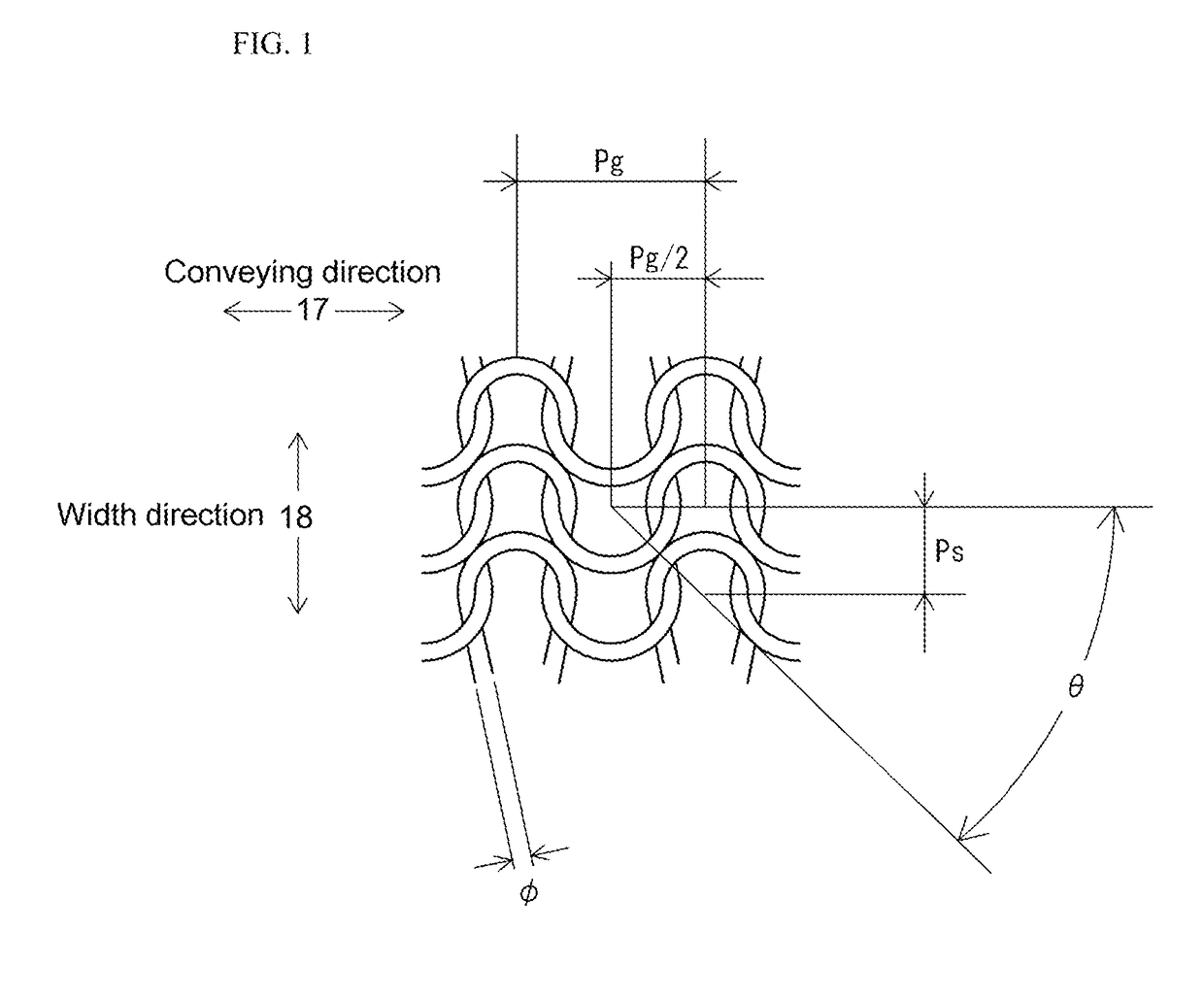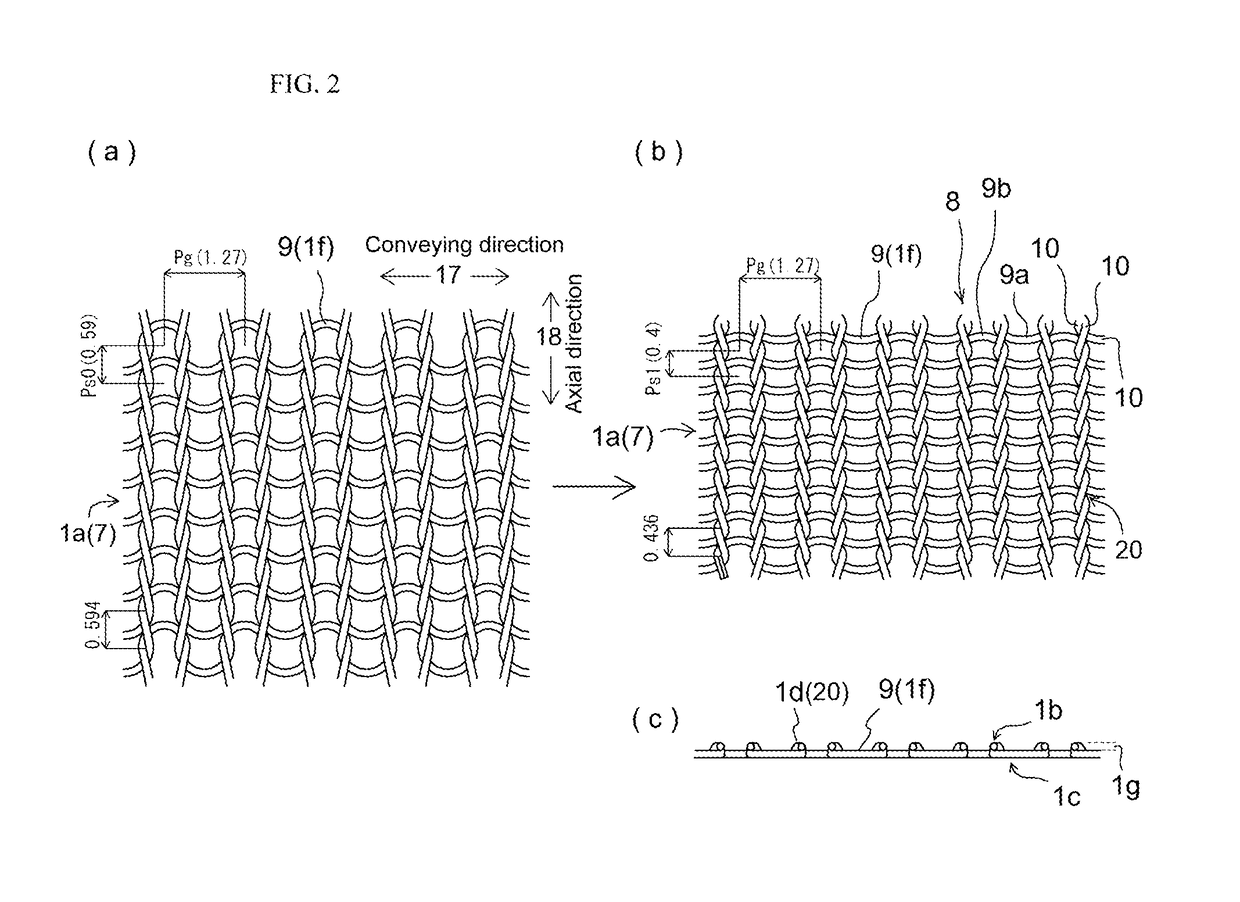Conveyor belt and drive belt comprising knitted belt, and conveyor device using conveyor belt
a technology of conveyor belts and drive belts, which is applied in the direction of driving belts, belts/chains/gearings, thin material processing, etc., can solve the problems of increasing manufacturing costs, affecting the quality of knitted belts, so as to reduce the elongation of the belt, and the effect of not easily deformed
- Summary
- Abstract
- Description
- Claims
- Application Information
AI Technical Summary
Benefits of technology
Problems solved by technology
Method used
Image
Examples
working examples
[0099]TABLE 1 lists filament material, whether heat-setting was carried out, and various other characteristics of Working Examples 1 through 6, which are knit belts 1a comprising knit fabric 7 which is weft-knit 7a associated with the present invention, and Comparative Example 1, which is a mesh belt comprising woven fabric made in plain weave for purposes of comparison therewith. At this TABLE 1, Working Examples 1 through 4 were such that a seamless knit belt 4, as is for example shown in FIG. 8, comprising knitting in which, to increase coefficient of friction, urethane filament elastic fiber comprising modified cross-section as shown at (h) in FIG. 11 was used as plating yarn 12a of modified cross-section to carry out plating of a core yarn 11 which was Nylon (trade name) filament. Working Example 5 indicates a seamless knit belt 4 constituted of only monofilament 15a. Moreover, Working Example 6 indicates a seamless knit belt 4 that was formed such that Nylon (trade name) filam...
PUM
 Login to View More
Login to View More Abstract
Description
Claims
Application Information
 Login to View More
Login to View More - R&D
- Intellectual Property
- Life Sciences
- Materials
- Tech Scout
- Unparalleled Data Quality
- Higher Quality Content
- 60% Fewer Hallucinations
Browse by: Latest US Patents, China's latest patents, Technical Efficacy Thesaurus, Application Domain, Technology Topic, Popular Technical Reports.
© 2025 PatSnap. All rights reserved.Legal|Privacy policy|Modern Slavery Act Transparency Statement|Sitemap|About US| Contact US: help@patsnap.com



